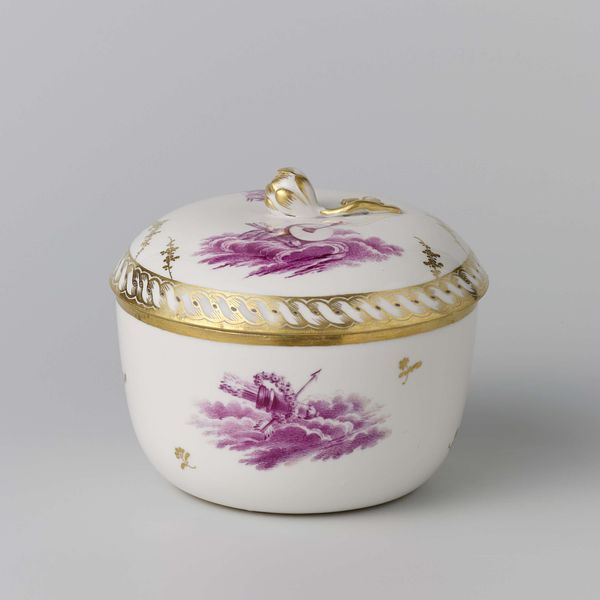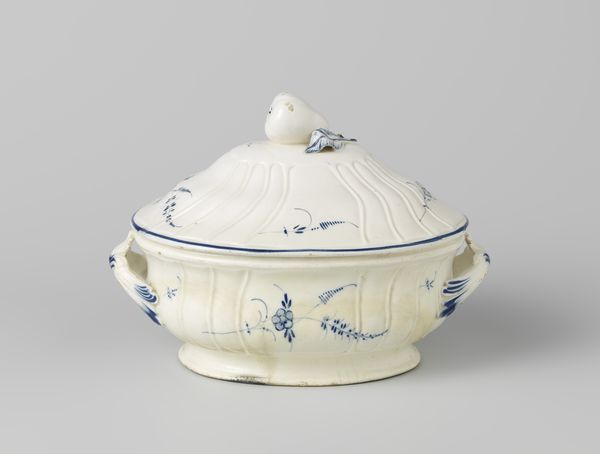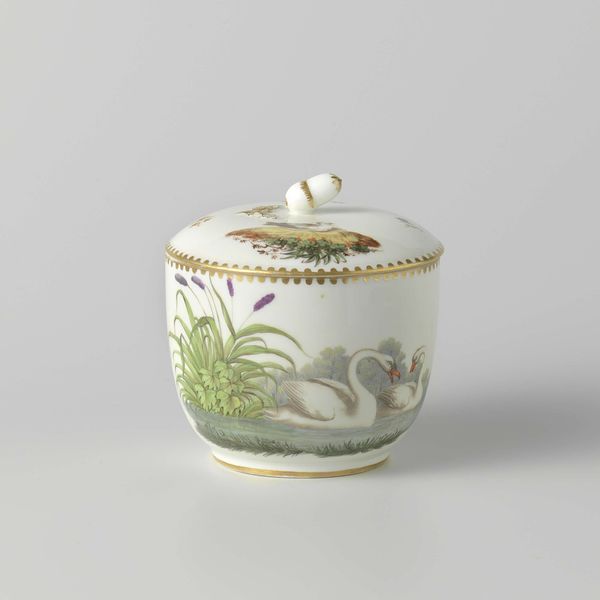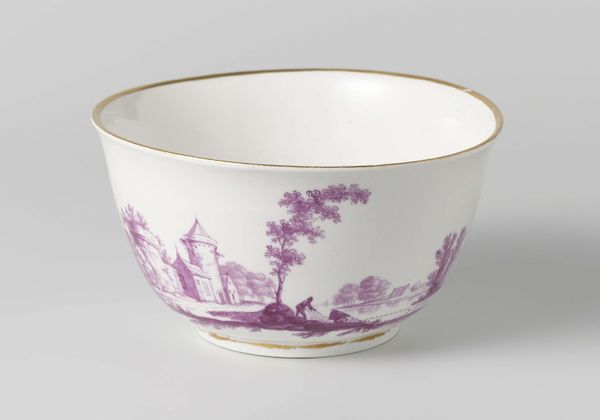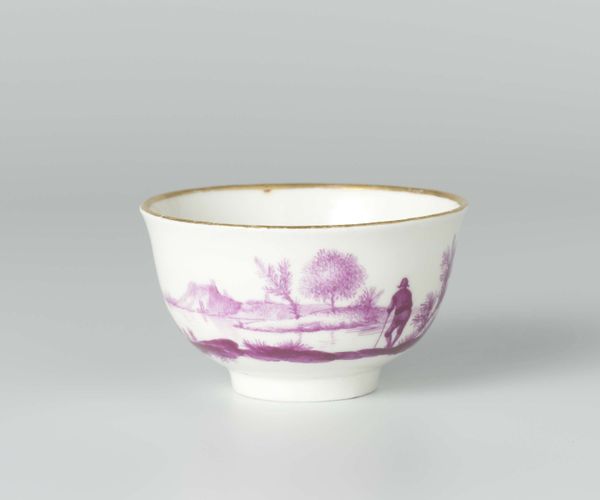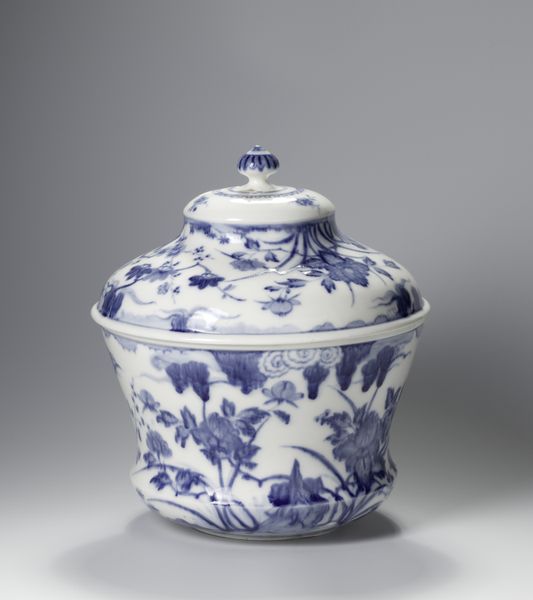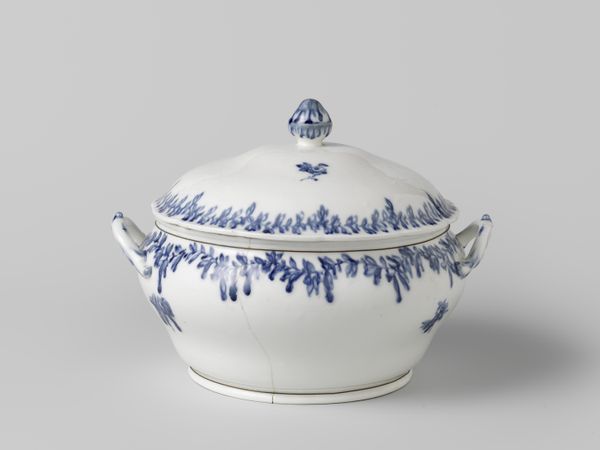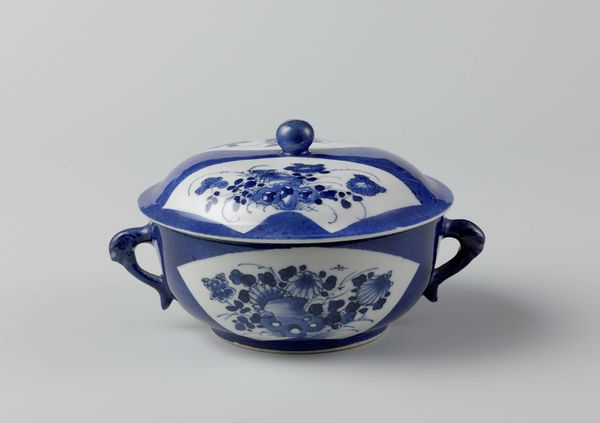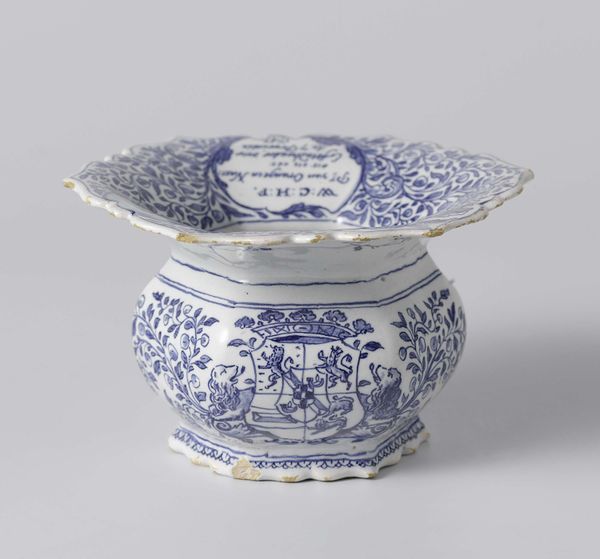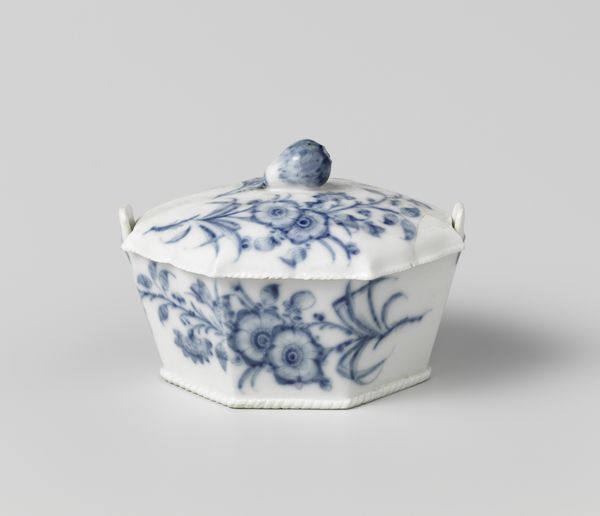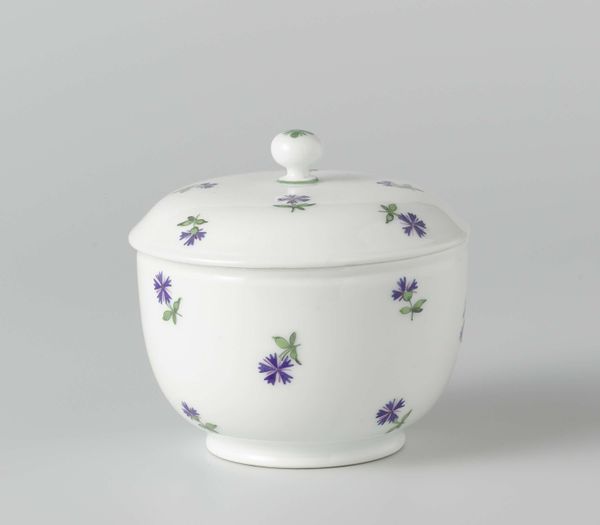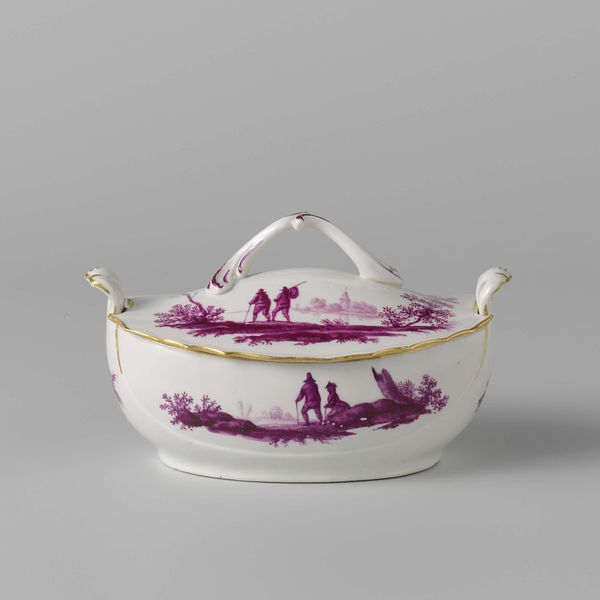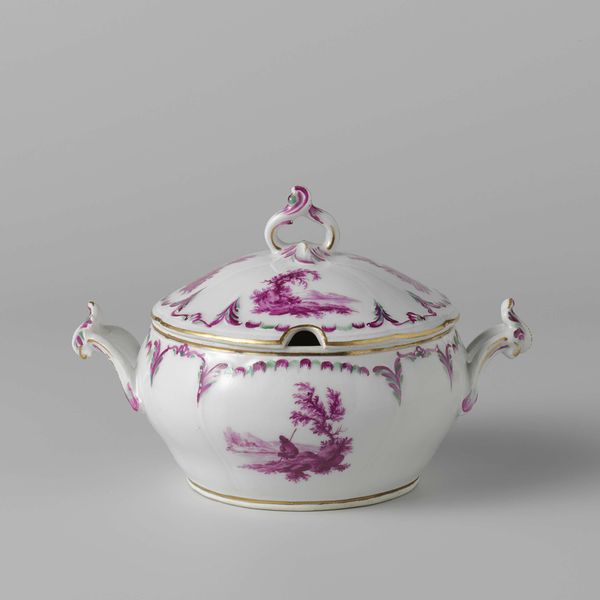
Dimensions: height 11.3 cm, diameter 10.3 cm
Copyright: Rijks Museum: Open Domain
Curator: Here we have part of a tea service, crafted sometime between 1774 and 1778. What’s especially striking about this piece from Loosdrecht, now residing at the Rijksmuseum, is its delicate rococo style depicted in ceramic and porcelain. Editor: It's remarkably pretty! The purple monochrome landscape illustrations wrapping around the white porcelain give it such a charming, almost ethereal, quality. It feels quite idyllic and restrained. Curator: Precisely. And it’s vital to consider that ceramics in this era often functioned as political billboards, showcasing the wealth, taste and, indeed, the colonial reach of the owners. A piece like this, especially when part of an entire service, would have projected an image of cultivated elegance and affluence. Editor: Yes, it speaks volumes about the owner’s identity and their social standing. The miniature landscape, though seemingly innocent, normalizes a certain lifestyle of leisure made possible, most probably, by exploiting resources and labour within the colonies. The landscape, then, almost acts as a branding, projecting a refined aesthetic while conveniently overlooking any less palatable origins. Curator: And that interplay between decoration and intent is crucial. This isn't simply a teacup, or sugar bowl. It is a carefully constructed statement piece reflecting contemporary values, trade, and social hierarchies, influencing how the consumers understood their status. Editor: It makes you question who those people are in the pastoral scenes on the porcelain. Are they romanticized depictions of the landholders, or anonymous figures rendered as decorations on commodities? It opens up interesting questions of representation and whose stories are considered worth telling, or worth consuming. Curator: Indeed, analyzing objects like these reminds us that art is seldom neutral, but actively engaged with broader social and economic structures, making the visible beautiful while keeping any inherent structural disparities out of plain view. Editor: It really shows us how crucial it is to look beyond surface appeal. Even the most "pretty" objects can provoke discussions about culture, class, power and representation. There's always so much more to see and reflect on.
